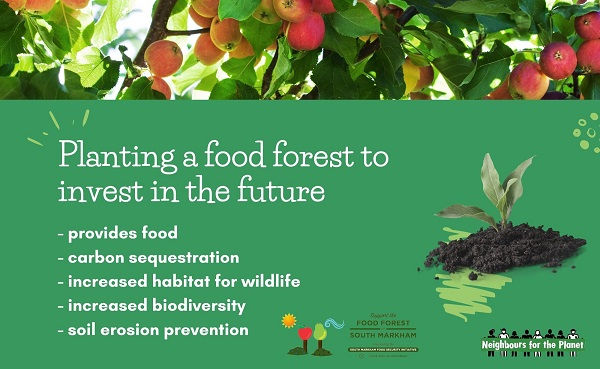Gardening with kids: sowing love, cultivating connection, and harvesting joy
- Julia Fursova
- Mar 9, 2021
- 5 min read
Updated: Mar 15, 2021
Written by Julia Fursova, March 9, 2021
Dedicated to my Mom and Dad, who taught me how to garden

Families who play together - stay together, and so do families that eat together. I strongly believe that families who garden together also stay together. Every foundational thing I know about gardening I learned from my Dad: “Always water cucumbers at the root with warm water from the rain barrel.” I remember myself as a grumpy teenager who would rather be on the beach, unwillingly helping with staking tomato plants.

But when the time came to stake and tie my own tomatoes independently, my fingers easily remembered how to do it, a loop around the stem, criss-cross, another loop around the stake, Dad’s voice in my mind: “give the stem some space to grow, do not wrap tight, always use an old worn T-shirt cut into long strips, it is stretchy, soft and costs nothing”. Yes, we practiced the three Rs of reuse, reduce, recycle long before it became a trend. I will always remember the excitement of getting new seeds from my Mom’s workplace gardening club at their annual seed distribution events. Every year there was some novelty to try. My parents are now in their 80s, but they still garden. I live very far from them, but we always snap and exchange photos of our gardening successes and failures. Our WhatsApp chat is full of pictures of the cucumbers, tomatoes, zucchini, and other plants we grow every year. And whenever I visit them during the gardening season, I no longer want to be anywhere else but in our family garden, staking tomatoes with my Dad.
It comes as no surprise then that I started gardening with my daughter as soon as I was able to get access to some growing space. My daughter was four, and since then, we garden together. She is fifteen now but still sticks to the family ‘tradition’ of planting green peas and lettuce shortly after the last frost. Reflecting on my own childhood memories and on my parenting experience, I want to encourage other parents to grow food together with their kids. Really, it is one of the best things you can do for your kids' mental and physical health, plus it is such an important life skill. When to start? As early as possible, and it is never too late. A three-year-old child is capable of poking a small hole in the ground, placing a seed, putting the soft blanket of soil over, and watering it under your loving guidance. Kids tend to overwater; you will have to supervise them unless you plan on creating a swamp garden. 😊

Start with easy and fast-growing plants and those that have fairly large size seeds. Beans and green peas are the perfect starters. Green peas’ seeds are large, round, and easy to handle for little fingers. They grow and mature fast, and within two months, your excited kids will be collecting their first harvest of tender green pods right off the plant. These are some of the most nutritious snacks that come in a perfect compostable package, just the way Mama Nature intended. Plant fast-growing varieties of shelling peas such as Sugar Prince, Garden Sweet, Sugar Daddy, or a dwarf variety Patio Pride for growing in containers. Plant some Snow Peas with edible soft pods, such as Snowbird or Oregon Sugar Pod. Enjoy observing the development of tender flowers that look like little butterflies hiding in the plant's bright emerald foliage. Then watch the magic of a peapod forming from a tiny green wisp to a fully grown pod swollen with round green peas.

Beans are another perfect vegetable to grow with kids, and there are so many varieties to choose from! My favourites are Scarlet Runner Beans; they are not only edible but also highly decorative with bright red flowers that attract hummingbirds. They are a fast-growing plant and require support, a fence, or a pole to climb on. They provide great material for a science experiment, mark a place on a pole at the tip of the young plant, and check after 24 hours, how fast they grow within a day; you would be surprised, an inch a day in a sunny location! One year, we planted a ‘magic beans’ garden; I simply went to the Bulk Barn and purchased almost all kinds of dry beans they had there – kidney beans, black beans, garbanzo beans (aka chickpea), mung beans, and pinto bean. We sprouted them and then planted a row of each in our garden. We observed how they grow, noticing the variety in foliage, the shape of the pods, size of the beans. It was a fascinating study of beans and diversity; I strongly recommend trying it!

Nasturtiums are another rewarding plant for the kids to grow. Their seeds are large and round, they have strikingly beautiful flowers, and the flowers are edible! Invite your children to decorate a salad plate or a snack platter with nasturtiums, add the flowers to ice cubes for your summer lemonade, use them as a garnish for your sandwiches. Kids will enjoy the idea of eating flowers; it’s fun! The seeds are easy to harvest and keep for the next growing season; just snap off the green ‘berries’ that form at the stem underneath the wilted flower. Keep them in a dry place for planting next year.

Plant some sunflowers, for they teach important lessons of always following the light and sharing the abundance. Harvest sunflower heads when seeds are mature but keep a few for the birds and enjoy observing flocks of finches, chickadees, nuthatches, and cardinals picking the seeds from these living birdfeeders.
At last, but not least, plant a pumpkin! You don’t need a pumpkin patch and even if you don’t have a big garden, you can plant a small variety, Sugar Pie pumpkin, or perhaps some decorative gourd type of pumpkin, which, although not edible, are fun to grow and decorate with on Thanksgiving and Halloween.
Do not worry about ‘failing’. Plant a seed in the ground, but most importantly – in your child’s soul. Kids do not necessarily focus on big harvest, but they will always appreciate the sense of awe and discovery while they watch the seeds pushing through the ground, the seedlings unfurling their leaves, the buds forming, the flowers opening, and then the fruits slowly appearing and bulging where flowers used to be. No high-tech gadget can provide this kind of magic, and no Wi-Fi signal can create a connection as strong as growing a garden together.
About the Author
Julia Fursova, Ph.D., Environmental Studies
Community-based researcher, transformative evaluator and educator, and climate justice activist.



Comments